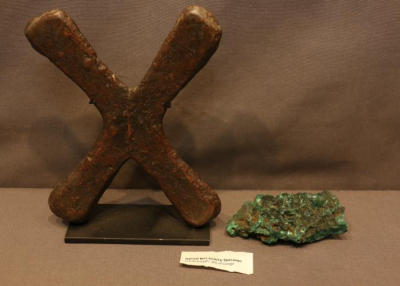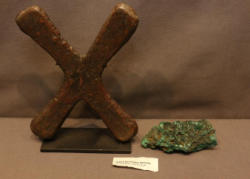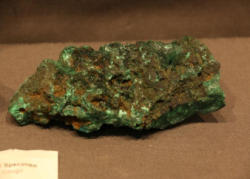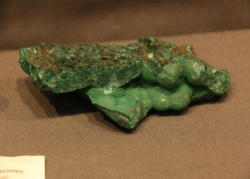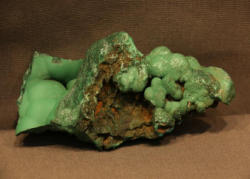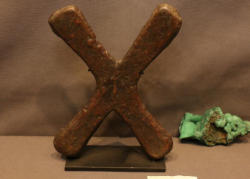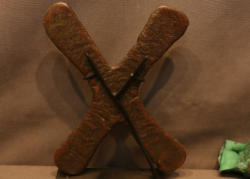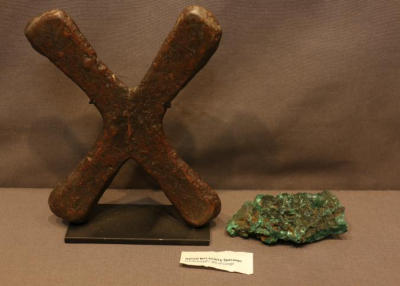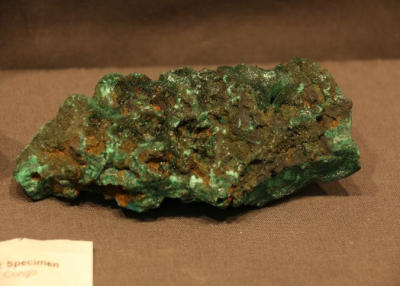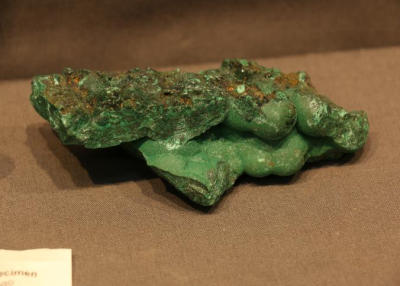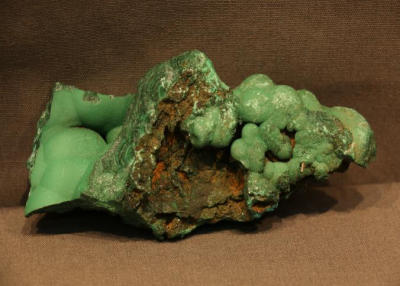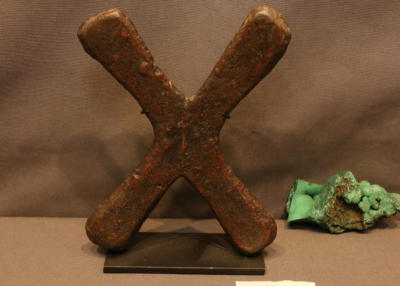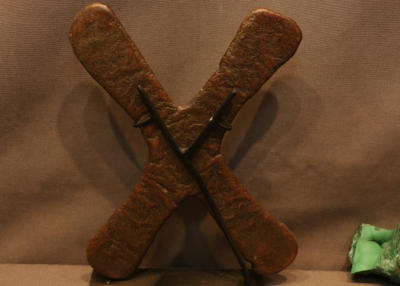Items located in Pleasant Valley, NY. Items include Faro, the water genie puppet from Mali; West African double gongs; Ode-lay society head crest mask from Sierra Leone; African sculptures, figurines, masks, textiles, ceremonial robes, copper rod currency, and more.
AFRICAN ART COLLECTION OF MARY SUE AND PAUL PETER ROSEN
Mary Sue and Paul Peter Rosen have collected African art for over thirty years, making nine trips to Africa to study the art in its cultural setting. The Rosens have published three African art books, curated more than ten exhibitions from their collection, and have given public lectures about African art and culture. They have donated art from their collection to various institutions including the Newark Museum, Temple University in Philadelphia, the SMA Fathers African Art Museum in Tenafly, New Jersey, and the African American Research Library in Fort Lauderdale, Florida.
Payment is due by Monday, April 1 at 1PM.
Pickup in Pleasant Valley, NY must be completed by Monday, April 1 at 3PM.
All lots sold as is, where is. There is a 15% Buyers Premium for all lots purchased. Payment methods include cash, MC, Visa, Discover or good check. You can make credit card payment online by going to your Member Area and selecting your invoice.
*NOTE* Shipping is available on all items.
AFRICAN ART COLLECTION OF MARY SUE AND PAUL PETER ROSEN
Mary Sue and Paul Peter Rosen have collected African art for over thirty years, making nine trips to Africa to study the art in its cultural setting. The Rosens have published three African art books, curated more than ten exhibitions from their collection, and have given public lectures about African art and culture. They have donated art from their collection to various institutions including the Newark Museum, Temple University in Philadelphia, the SMA Fathers African Art Museum in Tenafly, New Jersey, and the African American Research Library in Fort Lauderdale, Florida.
Payment is due by Monday, April 1 at 1PM.
Pickup in Pleasant Valley, NY must be completed by Monday, April 1 at 3PM.
All lots sold as is, where is. There is a 15% Buyers Premium for all lots purchased. Payment methods include cash, MC, Visa, Discover or good check. You can make credit card payment online by going to your Member Area and selecting your invoice.
*NOTE* Shipping is available on all items.
?EMBLEMS OF POWER. ASAFO FLAGS FROM GHANA? BY M.S. AND P.P. ROSEN IS ONLY AVAILABLE FROM THE AUTHORS AT ppr2001@med.cornell.edu PRICE POSTPAID IN US IS $25.00; OUTSIDE US POSTPAID $35.00.
Auction Info
Items located in Pleasant Valley, NY. Items include Faro, the water genie puppet from Mali; West African double gongs; Ode-lay society head crest mask from Sierra Leone; African sculptures, figurines, masks, textiles, ceremonial robes, copper rod currency, and more.
AFRICAN ART COLLECTION OF MARY SUE AND PAUL PETER ROSEN
Mary Sue and Paul Peter Rosen have collected African art for over thirty years, making nine trips to Africa to study the art in its cultural setting. The Rosens have published three African art books, curated more than ten exhibitions from their collection, and have given public lectures about African art and culture. They have donated art from their collection to various institutions including the Newark Museum, Temple University in Philadelphia, the SMA Fathers African Art Museum in Tenafly, New Jersey, and the African American Research Library in Fort Lauderdale, Florida.
Payment is due by Monday, April 1 at 1PM.
Pickup in Pleasant Valley, NY must be completed by Monday, April 1 at 3PM.
All lots sold as is, where is. There is a 15% Buyers Premium for all lots purchased. Payment methods include cash, MC, Visa, Discover or good check. You can make credit card payment online by going to your Member Area and selecting your invoice.
*NOTE* Shipping is available on all items.
AFRICAN ART COLLECTION OF MARY SUE AND PAUL PETER ROSEN
Mary Sue and Paul Peter Rosen have collected African art for over thirty years, making nine trips to Africa to study the art in its cultural setting. The Rosens have published three African art books, curated more than ten exhibitions from their collection, and have given public lectures about African art and culture. They have donated art from their collection to various institutions including the Newark Museum, Temple University in Philadelphia, the SMA Fathers African Art Museum in Tenafly, New Jersey, and the African American Research Library in Fort Lauderdale, Florida.
Payment is due by Monday, April 1 at 1PM.
Pickup in Pleasant Valley, NY must be completed by Monday, April 1 at 3PM.
All lots sold as is, where is. There is a 15% Buyers Premium for all lots purchased. Payment methods include cash, MC, Visa, Discover or good check. You can make credit card payment online by going to your Member Area and selecting your invoice.
*NOTE* Shipping is available on all items.
?EMBLEMS OF POWER. ASAFO FLAGS FROM GHANA? BY M.S. AND P.P. ROSEN IS ONLY AVAILABLE FROM THE AUTHORS AT ppr2001@med.cornell.edu PRICE POSTPAID IN US IS $25.00; OUTSIDE US POSTPAID $35.00.
Categories:
LARGE HANDA OR KATANGA CROSS. Luba people, Congo. Copper ingots cast in the shape of an X or H were a form of currency originating in the copper-rich Katanga region of the Congo and other parts of the African copper belt. (A) Handas were distributed as a form of currency along major trade routes with values that generally increased with increasing distance from the point of origin. Molten copper obtained by smelting copper-rich malachite ore was cast in molds carved in clay, soapstone or wet sand. The upper side of the handa has a rippled surface formed as the molten, viscous metal cooled and solidified. In the Congo, it was reported that a goat would cost 3 handas, a male slave 3-5 handas and a female slave 5-10 handas. In some remote areas, handas were used as currency until the 1950s. On custom base. Copper. H 8in. Weight 2.4lb. (B) Malachite copper ore from Lumbumbashi, Katanga province, Congo.
More Details
LARGE HANDA OR KATANGA CROSS. Luba people, Congo. Copper ingots cast in the shape of an X or H were a form of currency originating in the copper-rich Katanga region of the Congo and other parts of the African copper belt. (A) Handas were distributed as a form of currency along major trade routes with values that generally increased with increasing distance from the point of origin. Molten copper obtained by smelting copper-rich malachite ore was cast in molds carved in clay, soapstone or wet sand. The upper side of the handa has a rippled surface formed as the molten, viscous metal cooled and solidified. In the Congo, it was reported that a goat would cost 3 handas, a male slave 3-5 handas and a female slave 5-10 handas. In some remote areas, handas were used as currency until the 1950s. On custom base. Copper. H 8in. Weight 2.4lb. (B) Malachite copper ore from Lumbumbashi, Katanga province, Congo.
High Bid:
$110.00 – wheeler
Auction Type: One Lot
Quantity: 1
Bidding has closed on this lot

